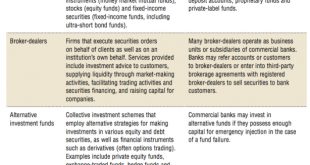from Mark Weisbrot Republican nominee Donald Trump’s embarrassments and scandals keep piling up, from his Twitter meltdown last Friday night to The New York Times revelations that he could have gotten away without paying income taxes for the past 18 years. These may have some impact on the race, although it’s tough to guess how much. But a recent piece in the Times about Trump’s potential influence on the stock market could really take some votes away from him, if it happens to go...
Read More »Rents, GDP per capita, Bacon prices, Atlanta Fed
Some Big U.S. Cities See Apartment Rents Fall for First Time in Years By Laura Kusisto Oct 4 (WSJ) — Rents in San Francisco declined 3%, while they fell about 1% in New York and edged lower in Houston and San Jose, Calif., the first drops in those markets since 2010, according to apartment tracker MPF Research. Across the U.S., rent growth was 4.1% on average. According to a report by Axiometrics Inc., growth in the U.S., slowed to 3% in the third quarter from 5.2% in the...
Read More »Mortgage purchase apps, ADP employment, International trade, PMI services, ISM services, Factory orders
The year over year change not looking so good: Highlights Purchase applications for home mortgages were down just 0.1 percent from the prior week in the September 30 week, but the comparison with the year ago week plunged sharply into deeply negative territory at minus 14 percent. Refinancing applications were up 5.0 percent from the prior week, however, as more mortgage holders seized the opportunity to refinance with lower interest rates. The refinancing share of mortgage...
Read More »An Undergraduate’s Question about Economic Policy
I received an e-mail from an undergraduate economics student who was curious about economic policy in Washington, DC. His question says a lot about the current state of affairs. Here it is with my reply. From: Xxxxxxx Xxxxxxx [mailto:[email protected]] Sent: Saturday, October 1, 2016 10:56 AM To: mail Subject: Question from an undergraduate Dear Dr. Palley, I am [...]
Read More »Can Carney do more to stabilise Brexit Britain? Bloomberg TV
October 5th, 2016 Ann Pettifor spoke on a Bloomberg TV panel with Gerard Lyons, Ambassador Paquale Terracciano and host Francine Lacqua on The Pulse. The U.K. services industry recorded a decent expansion in the first month after Brexit, all but scrubbing the chances of the U.K. economy contracting in the third quarter. The data make it more likely that that Bank of England’s Monetary Policy Committee will refrain fromeasing further this year, although policy makers will want to see the...
Read More »Ann Pettifor in New Zealand on the financialised economy
October 5th, 2016 Ann Pettifor recently travelled to New Zealand at the invitation of Professor Ian Shirley of The Policy Observatory and Vice Chancellor Derek McCormack at Auckland University of Technology, and also Mike Smith of the New Zealand Fabian Society. She spent 10 days delivering public lectures on economics in Wellington and Auckland. In one of her media interviews Ann spoke to the formidable and highly regarded Kathryn Ryan, host of Nine to Noon on Radio NZ about the...
Read More »Whiplash effects of NIRP (Thomas Palley)
The potential future costs of financial fragility and asset price bubbles raise the prospect of policy whiplash effects due to contradictions between current and future policy actions. The economy currently suffers from shortage of AD owing to systemic failings related to income inequality and trade deficit leakages. That demand shortage was papered over by a thirty-year credit bubble plus successive asset price bubbles, which eventually burst with the financial crisis of 2008. Now,...
Read More »Negative interest rates or 100% reserves: alchemy vs chemistry – Herman Daly
Negative interest rates or 100% reserves: alchemy vs chemistry Herman Daly [University of Maryland, USA] The close connection of fractional reserve banking with alchemy was recently emphasized by Mervyn King, former head of the Bank of England, in the very title of his recent book, The End of Alchemy: Money, Banking, and the Failure of the Global Economy. He refers to the more thorough development of this connection by Swiss ecological economist H. C. Binswanger in his brilliant study,...
Read More »Vehicle sales, Manhattan apartment sales, ISM NY, Redbook retail sales
Based on a preliminary estimate from WardsAuto, light vehicle sales were at a 17.65 million SAAR in September. That is down about 2% from September 2015, and up 4.3% from the 16.92 million annual sales rate last month. Read more at http://www.calculatedriskblog.com/#ycdZ4cVpGQLvjHoI.99 Manhattan apartment sales plunge 19 percent By Robert Frank ISM New York Report On Business September 2016 ISM New York 49.6 in September. New York City business activity largely held...
Read More »Lengthening shadows
from David Ruccio While Wells Fargo (whose CEO blamed employees for his bank’s failings) has put traditional banks in the news lately, the resurgence of the so-called shadow banking sector has largely gone unnoticed. Until now. The Dallas Fed (pdf) has issued an alarming report concerning the growth of financial activities that, while connected to traditional banks, remains largely unregulated—even under Dodd-Frank. “Shadow banking,” an almost sinister-sounding term that originated in...
Read More » Heterodox
Heterodox






